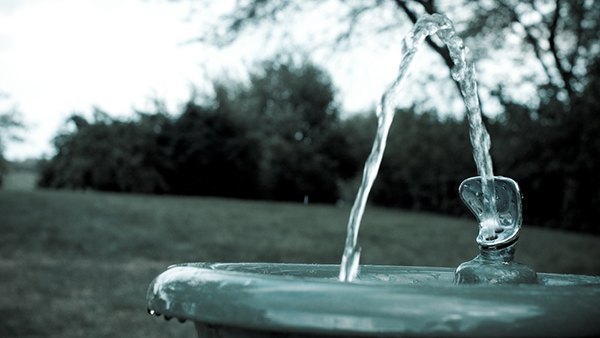Water fountains : A health hazard?

If you’ve been paying attention to the water world, you will have seen increasing attention to the resurgence of water fountains in public spaces. London’s Mayor, Sadiq Khan, is keen to cut down the capitals high usage of bottled water by increasing the availability of public water fountains across the city, this is supported by such organisations as Water for London and Find a Fountain.
Cutting down the usage of bottled water is a brilliant priority, we use almost half a trillion plastic bottles per year, and less than half of these are recycled, many ending up in landfills or oceans. However, today we are questioning whether water fountains are the ideal solution.
Health & hygiene
When it comes to hydration, every effort should be made to ensure that your water quality is as safe and hygienic as possible. Facilities managers for education settings or public venues often elect to install the traditional water fountain, this consists of a basin with a tap feature, the drinker bends down to the stream of the water, and swallows directly from the stream.
However, a recent study found that 55% of the British public were concerned about the cleanliness of public water fountains. But does this concern have grounds? Sadly, it seems so. Biologists have tested water fountains in 54 schools in Yorkshire. They found that 47 fountains in 17 schools had high bacterial colony counts, supported by the Environmental Protection Agency, who found that 8-11% of water fountains have high levels of bacteria.
This is not limited to educational environments, a recent US study found that drinking fountains in day care environments were a common source of rotavirus contamination. Rotavirus is the most common cause of diarrhoeal disease among infants and young children – not a virus you want to be consuming alongside your water!
What’s the issue?
The hygiene issues surrounding water fountains originate from a complex web of factors. First and foremost, the method in which water is consumed from these fountains creates a breeding ground for bacteria, requiring the user to place their mouths very near to the dispense tap. This occurs especially in education environments, where children drink from water fountains, often directly contacting the tap with their mouths or fingers, enabling cross contamination.
This is exacerbated by insufficient and poor cleaning. Elements such as the dispenser casing, pipe work, and handles can often be neglected in the cleaning process, allowing for the growth of algae and mould within the fountain.
What’s the solution?
The water you drink shouldn’t just taste fresh – it must be fresh and completely free of contamination. At Borg & Overström, users’ health is our top priority. That’s why we’ve developed a Totality hygiene system for complete peace of mind, complementing our commitment to Direct Chill coolers as the safe way to dispense water. Our Totality™ System consists of four key factors; Sterizen™, a hygiene flushing system, Viovandt™, a UV sterilising system, 3M Filtration, and Fynil™, a biolfilm resistant epoxy resin panel.
The Direct Chill System utilises advanced cooling technology to ensure your water is both hygienic and fresh. The direct chill system takes water directly from the supply source, and chills it in a coil on its way to the dispenser faucet. This ensures your water is fresh, and reduces the impurity levels in your water. If you’d like to find out more about our direct chill system, read our blog post about it here.
Each of our water coolers are designed with hygiene in mind, this is why our soft touch buttons are located away from the dispense point, our taps are shrouded faucets to avoid cross contamination, and our non-porous panels are easy clean, and impact resistant.
Contact our team today to discover how you could refresh your hydration options with a hygiene reduced, easy to use, alternative.

